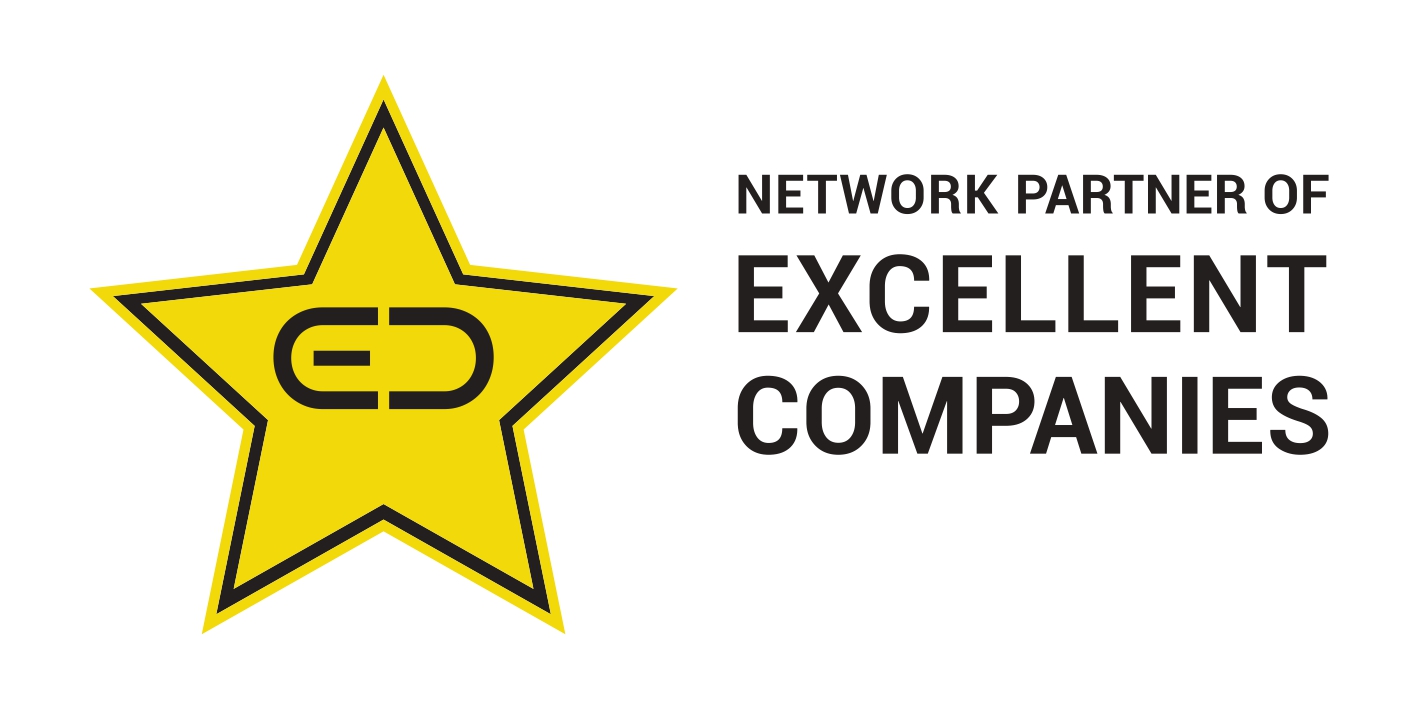December 17th, 2025, posted in for_founders
by Adelina
Software development projects are costly, can run for many years without a release, and present a major risk for financial loss. Unfortunately, it’s in its nature - bugs appear, developers quit, and prices keep going up while profits look murky.
So it might look rather scary to jump onto a big development project, even if you desperately need bug fixes, new features or a whole piece of software in order to scale up.
To avoid losing money through a software project, you need to plan it carefully and only jump into it only if you’re sure the ROI will be worth it.
So in this article, we’re going to talk about ROIs in software development projects, and how to calculate yours so you don’t end up at a loss due to software.
How much does it cost to build software and why?
Don’t go into building software when you don’t know if you can afford it. A big part of a ROI is the investment part, as you’re trying to figure out how much profit you can get out of an investment - the latter being the one you can calculate right away, while the former is just an estimate.
So in order to calculate the ROI of a software development project, you gotta know how much it costs - not only overall, but by different stages. Plus, you also need to understand what exactly goes into a software project, a.k.a what you’re paying so much for.
Here are the key stages of a software development project and how much you might pay during these stages:
-
Product discovery. This is the part where we understand your software goals, work out app features in detail, and create accurate UI/UX designs which will be the base for the development stage. This is a key stage that sets up the rest of the project, and can take around a week or two, depending on the complexity of your project. All companies charge different fees, but a ballpark is $50 to $100 per hour, per role. You might work with a designer, a developer as a consultant, and a manager or team lead.
-
Development. In our process, we always complete the entire UI/UX design before we start coding. So in the development phase, the design is brought to life and the functionality has already been fully mapped out. Costs here can vary a lot, as they depend on the length of the project and the seniority & amount of developers involved. Upwork provides the following developer hiring estimates: Entry level: $20 – $40 per hour; Intermediate: $40 – $70 per hour; Expert: $70 – $150+ per hour.
-
Testing & iterating. This is a key stage that can make or break your project. No code is ever perfect, and before releasing a piece of software, you gotta make sure it truly works. Testing can take anywhere from 2 weeks to several months, depending on the team you work with and the complexity of your project. Tests can be automated by the devs you hire, or you can work with manual testers. Upwork notes an average hourly rate of $20 for a tester.
As much as we can tell you how much different stages of a software development project can cost, in reality it’s very difficult to predict, even with all the data in front of us.
Fixed price projects don’t guarantee that you’ll get everything you need in time for your release, while software projects done in phases, via hourly rates, can be timed better but the costs can vary.
Why is that, you might ask? A lot of variables come into play when you build software. After all, you’re putting a series of concepts, ideas and wishes into pieces of code. Developers have to find solutions, and those don’t always work in their favor.
And plus, software development is a tricky, lengthy process. Hourly rates might seem low, but take into account that a very complex project can take years.
Are you building from scratch or adding new features?
Not all software projects take years. Building a complex piece of software from the ground up can take a long time, but a redesign that keeps an existing backend or adding new features to an established app can take just a few months, or even weeks.
Whether or not you’ll get a good ROI from a custom software development project can also depend on the size of the project. As we’ve already pointed out, a low hourly rate for devs doesn’t help when your project runs for years on end. Not only are you spending a lot, but it’s going to take a long time before you see results and thus calculate your ROI.
Here’s how your ROI can vary depending on whether you’re building software from scratch or adding new features:
-
Building software from scratch - building an app takes a lot of time and effort. You don’t really know how long it’ll take and how much you’ll really have to spend. You might get estimates, but you can always change your mind about features and spend more iterating. Thus, it’s much harder to accurately calculate your ROI. This doesn’t mean such an investment isn’t worth it, but you need to plan your project and carefully do product discovery so you don’t go over your budget or get surprised with delays and issues.
-
Adding new features - when you’re building upon an existing project, it’s obviously less intense than starting over. This doesn’t, however, mean you’ll pay way less or get a bigger ROI. You have to carefully consider whether these new features will be used, if they’ll be integrated successfully into your existing app, and whether they might push users away instead of closer. Such an example would be that of introducing new subscription plans and locking existing features behind a paywall. In other words, if you’re investing in new features, you have to make sure you can increase profits using said features. Doing user research before building can be useful.
And thus, even though adding new features can cost less, both methods carry the same amount of risk. It takes less time to get back a lower investment, but there’s no guarantee that you’ll get it back at all.
The key isn’t always the amount you invest, but the way you do it. And with software, being specific and planning your project wisely can get you better results.
How to calculate the ROI of a custom software development project
Now it’s time we get into the specifics. How do you actually calculate the ROI of a custom software development project? Now, ROI has the same formula regardless of industry, but we’re going to dive into the specifics of what you need to know in order to calculate it.
Just as a refresher, here is how you calculate the ROI of any project:
ROI = (Net Benefits / Total Cost) * 100
Define costs
Let’s start with the I part of ROI. In order to calculate your ROI, you need to know how much you’re actually investing. In the case of building software, there are several costs you need to consider.
Development Costs:
This refers to all expenses related to the project's design, development, and implementation. If your software partners build design-first, you’ll get a more accurate estimate for the development costs.
Hardware Costs:
If the software requires new hardware, factor in those costs. Maybe you’re building a piece of software so complex your team’s computers will need to be upgraded to run it.
Implementation Costs:
Consider data migration, process changes, and the cost of switching to the new system. This is especially important when adding on top of existing software, such as redesigns or new features.
Training Costs:
Account for the expense of training users on the new software. This can apply either to customers or your own employees, if you’re building a tool to use internally.
Maintenance Costs:
Factor in yearly operational costs, maintenance, licensing, bug fixes, technology upgrades, and anything else you might need over time. If you’re going to hire another team to do this, factor in the time it takes for them to get familiar with your software (it might be a better idea to stick with who built it in the first place).
Define benefits
Now we gotta look at the R part of ROI. What can you get in return? New customers? Time saved by your team? Increased profits? Sit down and look at all the things you can get out of a custom software development project.
Quantifiable Benefits:
Determine the savings and profits the software is expected to generate, which may include increased revenue, reduced operational costs, or improved efficiency. This is especially important when building internal software, as you’re trying to save human & financial resources through new software.
Qualitative Benefits:
Assess less tangible benefits, such as improved customer experience, better data analysis capabilities, or increased regulatory compliance. You can try to assign monetary value to these by estimating their impact on retention, sales, or other metrics. New features can attract new customers and keep existing customers longer.
Return on Time Saved:
Calculate the value of time saved by users due to the new software. This applies both to internal and customer-facing software. After all, time is money, no matter who’s time it is.
Risks when calculating a custom software project’s ROI
Unless you can predict the future like in That’s so Raven, it’s difficult to accurately calculate your ROI. You can get close, and might even get it right, but a lot of variables come into play - which can increase the amount you invest, plus the time it takes to get that money back.
Miscalculating costs
A lot of things can go wrong during software development. You might get estimates from your dev team, but that’s the thing - they’re just estimates. Your project might run long, people might quit, or you could end up having unsolvable bugs all throughout your code.
Here are a few risks that can come up during software development:
-
Scope changes. As you work on your custom software development project, you might change your mind about certain features or realize you missed something. This adds to your initial estimates and can extend the project duration.
-
Costs you weren’t aware of at the beginning. You might need to purchase certain services, hire extra people, upgrade your existing software or pay for licensing. Your dev team can account for some of these costs, but only if they’re fully aware of them.
-
Delays during development. When you’re about to release your software, you might think you’re right at the finish line. However, one of the final key stages of development is quality assurance, which can bring its own delays. You could find a lot of bugs and even edge cases you hadn’t thought of, all of which will take extra time to fix. And it’s not just this - a lot of delays can appear during development, some of which you have no control over.
-
Competitors launching similar features. You might not be ahead of your time. If you’re solving a fairly common issue, chances are someone else thought of it faster. This doesn’t mean you need to hurry up more, but rather to innovate and think outside the box.
To avoid miscalculating costs, you need to factor in multiple variables. Not everything will go according to plan, and in order to avoid negative surprises, you have to be mentally & financially ready for these challenges.
Overestimating the return
Just like you miscalculate the amount you need to invest, you might also overestimate the benefits your custom software development project can get for you. You might be too optimistic, or your project could last so long that your initial calculations will go out of date.
Here are ways you might overestimate your return on investment:
-
Overly optimistic predictions. You might think your software project is very innovative and will disrupt your industry. But will it, really? You might need to take some time doing proper market and user research before jumping into a costly software development project.
-
Not considering industry, cultural or societal changes. Someone else might find a solution for the problem you’re fixing way before you. Or people will learn new ways to do it that don’t require software. Or your app might involve costly subscription rates that your key users won’t be able to afford due to economic changes. What’s the point of building an entire app when no one can or will use it?
-
Not thinking about worst-case scenarios. You can’t be sure your app launch will be successful. For instance, if you’re doing a major redesign, it’s likely you’ll upset current users and some might not want to stick around. You need to account for such risks and not assume everyone will love your new software right away. You might need to spend extra time and effort easing it all in.
Just like the investment portion, when thinking about the benefits you’ll get from a custom software development project, you shouldn’t be overly optimistic. Factor in risks, variables, and be realistic about what you can achieve. It’s great to be confident and ambitious, but don’t do it blindly.
Ignoring non-financial benefits
When calculating the ROI of a software development project, you might end up being optimistic about the wrong things. As much as you could overestimate its financial benefits, you might overlook the non-tangible ones.
Here are a few potential non-tangible benefits of building custom software:
-
Reaching new users/customers. Even though you risk pushing away existing users when doing a redesign, you might attract new ones who like it better. Similarly, with a new, innovative software, you can reach new customers and find a new place within your industry.
-
Improving your employees’ workflows. If you’re building internal software, you might be thinking only about cutting costs. But you’re also improving your team’s day to day workflows. They’ll be more motivated and productive.
-
Creating new business connections. If you’re hiring a software outsourcing company, you might end up creating long-term connections with them, or even finding new, useful connections through them. And who knows, you might actually become friends.
-
Improved reputation. Innovating and finding creative solutions is bound to improve your overall reputation within your industry. This way, you’ll have an easier time finding new business partners or reaching new audiences.
Thus, non-tangible benefits might seem easy to ignore, but they’re more likely to bring long-term benefits to your business overall, compared to earnings which can go away much quicker. A better reputation and established spot among similar businesses can go a long way.
And so, measuring the ROI of a custom software development project is no easy feat. You need to factor in a lot of variables and risks, and you have to find the best balance between being optimistic and pessimistic. Neither extreme is okay, so take your time and weigh all the facts before jumping into major investment decisions.
In need of your own custom software development project? Contact us and let’s build something awesome together.

















